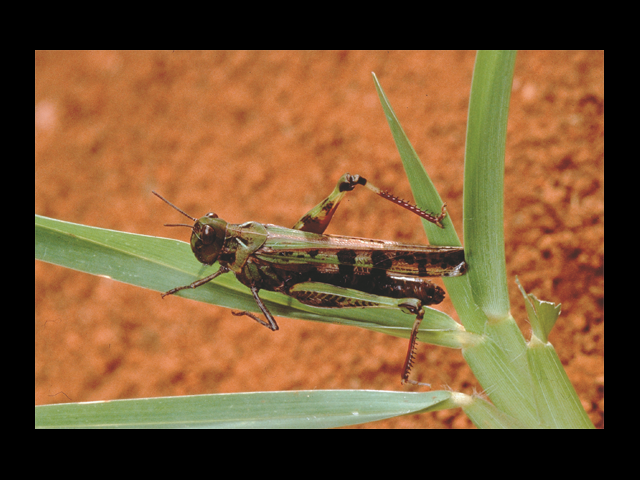Identification and biology
The Australian plague locust (Chortoicetes terminifera) is a native insect found throughout Australia. It usually inhabits pastoral regions in relatively low numbers, but with favourable weather conditions, numbers can increase greatly and locusts can migrate into agricultural regions.
The immature or hopper stage locusts damage mainly pastures in farming areas and gardens and lawns in domestic areas. They tend to avoid established green crops, although the edges of crops can be damaged. Adult locusts can form swarms and fly into other areas, damaging pastures, ripening crops, grapevines, fruit trees and tree seedlings. If crops have completely dried off before locusts begin flying, the possibility of damage is considerably less.
Description
Adult Australian plague locusts are between 24-40mm long. They vary in colour from light to dark shades of green to brown. Plague locusts have a dark blotch at the outer edge of the hind wing, and the inside of the hind legs are red in colour. Both adults and hoppers all have a distinctive cross on the thorax (that is, on their neck).
Hoppers and locusts can be easily confused with other native grasshoppers. The Australian plague locust: identification field guide provides images to help you identify the Australian plague locust.

Landholder locust control
Refer to the links under the ‘See Also’ section (side of page) for information regarding landholder locust control.
Contacts
Technical advice and enquiries on Australian Plague Locust matters can be directed to Svetlana Micic on +61 (0)8 9892 8591 or +61 (0)427 772 051.
For general enquiries regarding the Australian plague locust, contact the Pest and Disease Information Service.

